The European Space Agency’s Earth Cloud, Aerosol and Radiation Explorer (EarthCARE) has been in space for over a year already, measuring the effect of clouds and aerosols in regulating Earth’s climate.
Time has flown by, as have myriad planes from Cabo Verde to California, and Canada to Kiruna, criss-crossing EarthCARE’s orbits to calibrate and validate its suite of state-of-the-art instruments.
That last location, Kiruna, was a hive of activity in early April as the DLR’s HALO aircraft traversed the nippy Arctic air over Sweden in a crisply coordinated atmospheric line dance.
As EarthCARE passed above through gyrating beams of northern lights, an intrepid team from the ASCCI campaign soared through Scandinavian skies to match the satellite’s path and check its many measurements, whilst observing some of Earth’s most mysterious atmospheric processes.
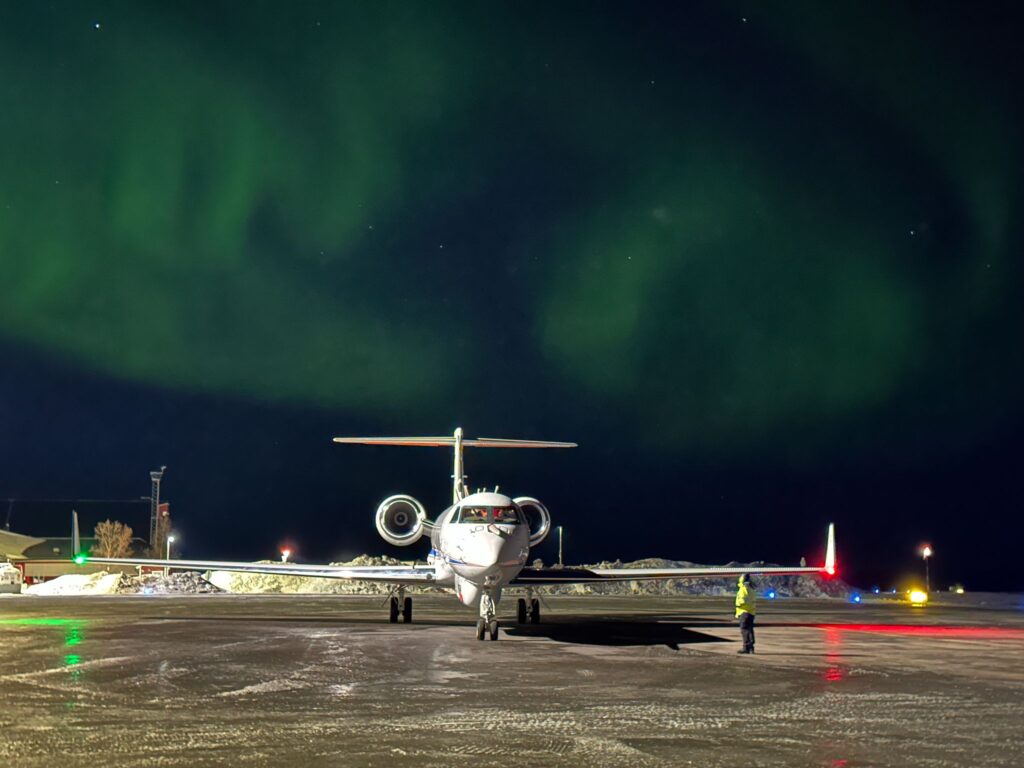
The DLR HALO aircraft is ready to roll back into the Hangar after a successful flight. (Image credit: Silke Groβ, DLR).
The Arctic’s confounding chemistry and clouds
The Arctic is one of the most rapidly changing places on Earth.
Global warming due to greenhouse gas emissions has driven a large reduction in Arctic sea ice over the past half a century, but this isn’t the only factor affecting the region’s energy balance.
Clouds, aerosols and trace gases in Earth’s atmosphere such as ozone all play a role. However, models often struggle to match observations, meaning their effects remain a bit of a mystery.
Man made pollutants can destroy ozone, leading to phenomena such as the ozone holes over both poles. Understanding the effect on energy balance when these pollutants are reduced over time is complex. One complicating matter is the fact that melting sea ice releases more bromine, which also depletes ozone.
Aerosols themselves can have warming or cooling effects, depending on their orientation, as can different types of clouds.
To find out more, we must delve into Arctic skies. Or, peer down at them from the high vantage point of a satellite like EarthCARE. Better still – both.
In early spring, therefore, the ASCCI campaign flew underneath EarthCARE to match its ATLID measurements of aerosols with those of lidar measurements taken from the DLR HALO aircraft.
Photographs from ESA’s Jonas von Bismarck and Konstantin Krüger and Silke Groβ of DLR help tell the story of a team hard at work on a campaign.
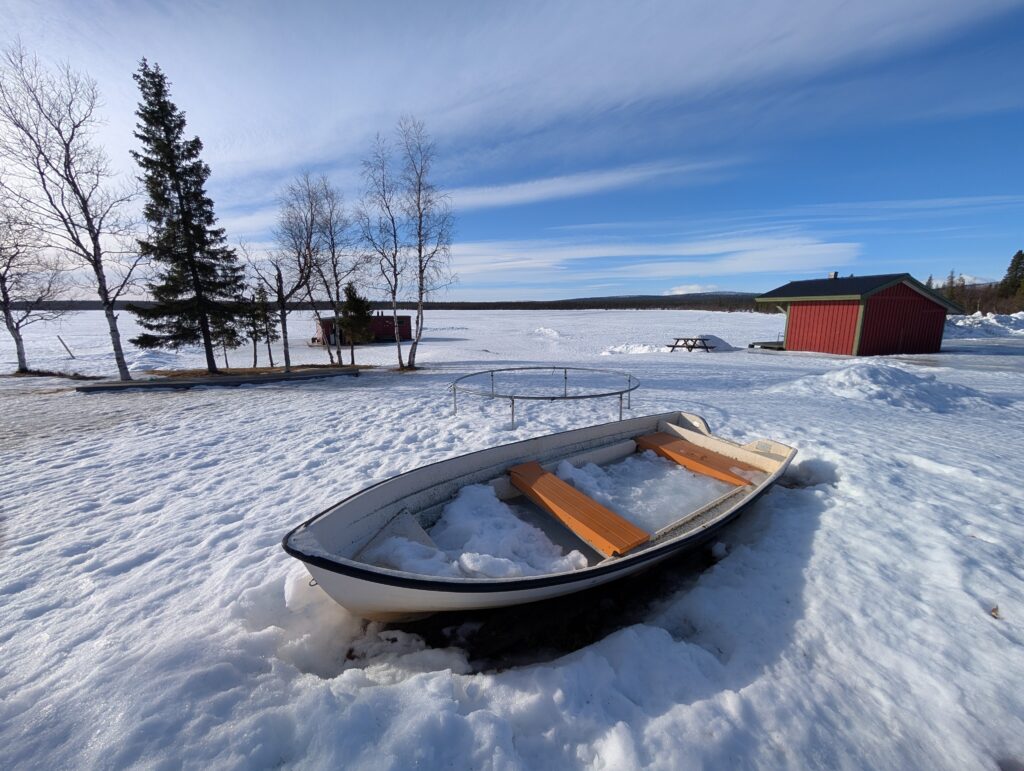
Snow as far as the eye could see in Kiruna, Sweden. (Image credit: Jonas von Bismarck, ESA).
Getting ready to fly
Flying directly underneath a satellite requires a lot of preparation, and the first thing the team must do is study weather maps and EarthCARE’s orbits to help plan the best times and locations to fly.
It’s essential to line up directly underneath EarthCARE if we’re to best validate its measurements.
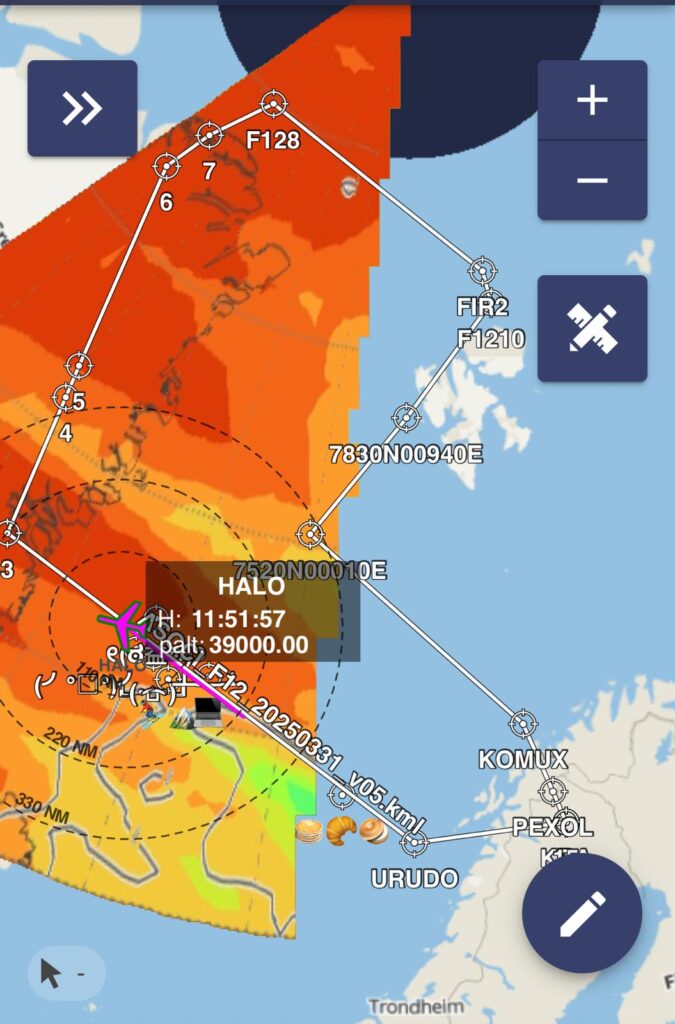
An example of a planned flight to align under an EarthCARE orbit off the coast of Norway. (Image credit: Silke Groß, DLR).
Once all the flight planning is done, and the day of the flight arrives, it’s time for the hangar roll out of the HALO aircraft and pre-flight preparations.
The HALO is DLR’s high altitude and long-range research aircraft, which is based on a Gulfstream G 550 ultra long-range business jet. It has a unique suite of instrumentation that is ideal for studying the Arctic atmosphere.
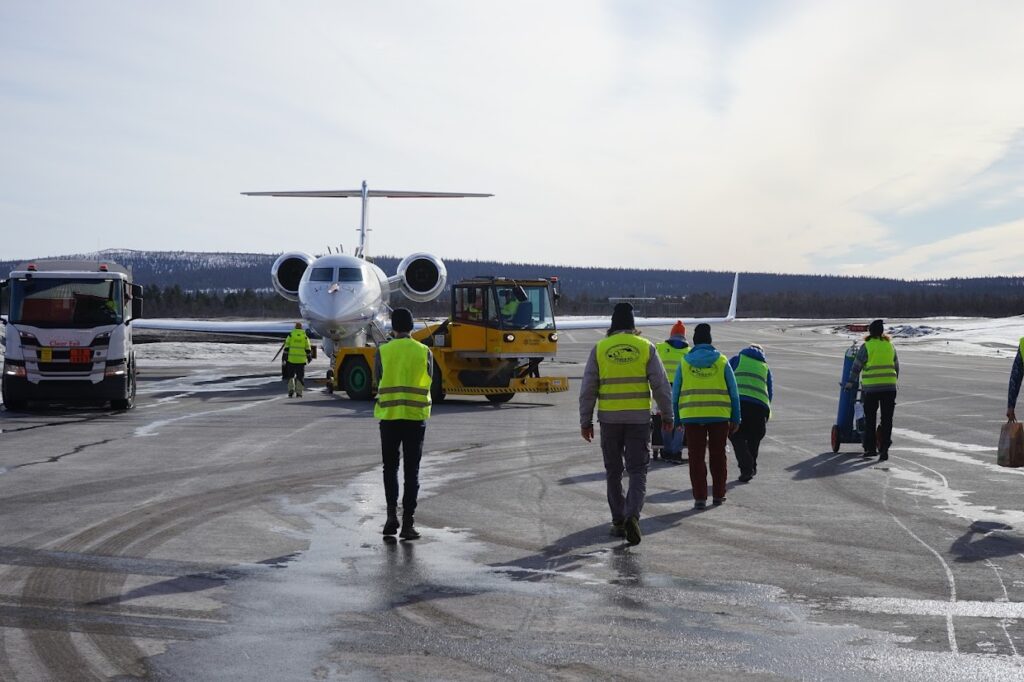
The HALO aircraft is being fuelled after hangar rollout. (Image credit: Jonas von Bismarck, ESA).
After the rollout of the HALO, the instruments and the aircraft are prepared for the upcoming research flight. Power connections are established between the aircraft and the hangar, and the pilots obtain the final EarthCARE orbit coordinates, using them to update and finalise the all-important flight pattern.
In the image below, the AIMS instrument is being set up. It is an airborne mass spectrometer that is used to measure climate-sensitive trace gases in Earth’s atmosphere, like ozone.

Setting up the AIMS instrument. (Image credit: Jonas von Bismarck, ESA).
Flying under the northern lights
Up in the air, there were some incredible sights from the HALO windows as the northern lights danced in the Arctic night sky.
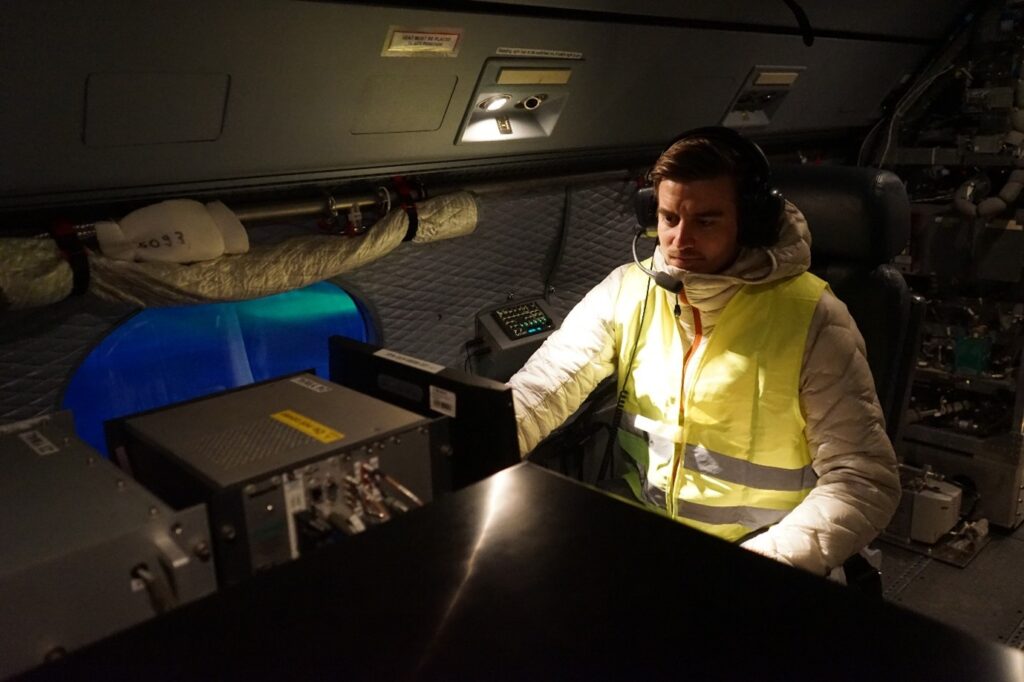
Konstantin Krüger (WALES operator of this research flight). (Image credit: Jonas von Bismarck, ESA).
We couldn’t stay glued to the aurora for long though. After all the preparations it was time to make sure we could take the ideal measurements to compare with those of EarthCARE.
In the image above, Konstantin is operating the WALES lidar instrument, which uses a laser to measure aerosols and cloud tops much like EarthCARE’s ATLID instrument.

Happy faces of a team delighted with a successful flight and good data. (Image credit: Jonas von Bismarck).
Once the flight is over, each instrument operator ensures that the valuable measurement data of the research flight is saved.
Then there is the de-flight briefing in the hangar, when the flight crew of pilots, scientists, the ground support team, the mission leader and the campaign leader discuss the flight.

The team debriefs in the hangar. (Image credit: Silke Groß, DLR).
The pilots reported that the planned flight path was executed as planned and the EarthCARE track was met sharply. The instruments ran smoothly and that meant great data could be measured – meaning all research targets for this flight were achieved.
You can see an example below of some WALES lidar data, and the dotted line shows where the HALO and EarthCARE hit perfect coordination.

A comparison of WALES lidar (top) and EarthCARE ATLID data (middle) showing comparison of the same clouds and aerosols over the same track (bottom). (Image credit: Martin Wirth, DLR).
Time to relax after the hard work is done
It’s important to celebrate a successful day by winding down and relaxing together.
Here, we chose a shuffleboard game in a bar in Kiruna – and you can see it drew a pretty great crowd!
The spring campaign was a great success, with 11 flights and approximately 64,000 km flown, underflying EarthCARE four times.
Now, it’s time to crunch the data, ready to present the results in the workshops coming up this year such as the Living Planet Symposium 2025, and then prepare our next campaign to continue calibrating and validating EarthCARE.
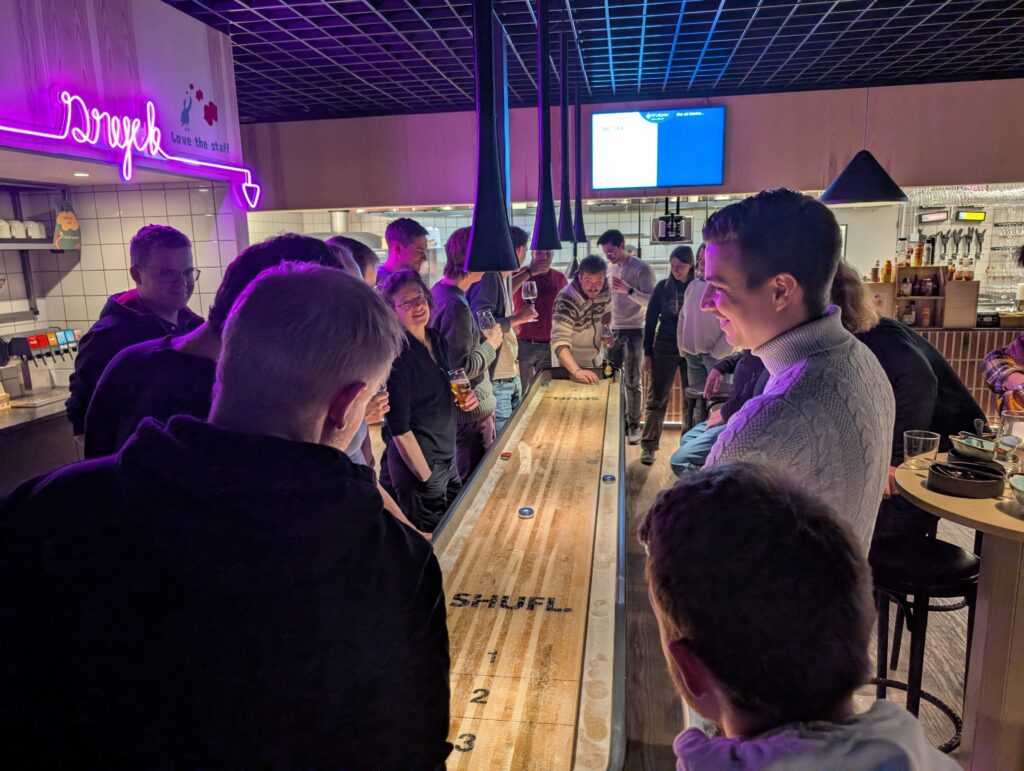
Shuffleboard after a long day. (Image credit: Jonas von Bismarck, ESA).








Discussion: no comments